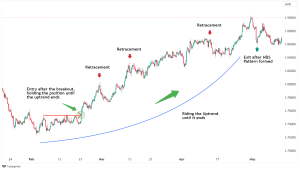Mastering Fundamental Analysis: How to Assess a Company’s Financial Health and Economic Factors
Introduction
When it comes to trading or investing, understanding a company’s underlying value is crucial. Fundamental analysis is a method used to evaluate a company’s financial health and its potential for future growth. By examining financial statements and economic factors, investors can make more informed decisions. In this post, we’ll delve into the essentials of fundamental analysis and how it can help you make smarter trading choices.
1. What is Fundamental Analysis?
Fundamental analysis involves evaluating a company’s financial health, performance, and potential by analyzing various factors. This includes studying financial statements, industry conditions, and broader economic indicators. The goal is to determine the intrinsic value of a company’s stock and identify whether it’s undervalued or overvalued.
2. Key Financial Statements
To perform fundamental analysis, you need to understand three main financial statements:
- Income Statement: Shows a company’s revenues, expenses, and profits over a specific period. Key metrics include revenue growth, operating income, and net income. This statement helps assess profitability and operational efficiency.
- Balance Sheet: Provides a snapshot of a company’s assets, liabilities, and shareholders’ equity at a specific point in time. Key metrics include the current ratio, debt-to-equity ratio, and book value. This statement helps evaluate a company’s financial stability and liquidity.
- Cash Flow Statement: Details the cash inflows and outflows from operating, investing, and financing activities. Key metrics include operating cash flow, free cash flow, and cash flow from investments. This statement helps assess a company’s cash generation and expenditure.
3. Financial Ratios and Metrics
Financial ratios are essential tools for analyzing a company’s performance. Some key ratios include:
- Price-to-Earnings (P/E) Ratio: Compares a company’s share price to its earnings per share (EPS). A high P/E ratio may indicate overvaluation, while a low P/E ratio may suggest undervaluation.
- Price-to-Book (P/B) Ratio: Compares the stock price to the book value per share. A lower P/B ratio may indicate that the stock is undervalued relative to its assets.
- Return on Equity (ROE): Measures a company’s profitability relative to shareholders’ equity. Higher ROE indicates efficient use of equity.
- Debt-to-Equity Ratio: Shows the proportion of debt used to finance the company’s assets. A high ratio may indicate higher financial risk.
4. Industry and Economic Factors
Beyond financial statements, it’s important to consider industry trends and economic factors:
- Industry Trends: Analyze the company’s position within its industry. Look at factors such as market share, competitive advantages, and industry growth rates.
- Economic Conditions: Evaluate macroeconomic factors such as interest rates, inflation, and economic growth. These factors can impact a company’s performance and stock price.
5. Valuation Methods
Valuing a company involves estimating its intrinsic value to determine if the stock is a good buy. Common valuation methods include:
- Discounted Cash Flow (DCF): Estimates the present value of expected future cash flows, discounted back to today’s value.
- Comparable Company Analysis: Compares the company to similar companies in the industry using valuation multiples like P/E and EV/EBITDA.
- Precedent Transactions: Looks at recent transactions of similar companies to estimate the company’s value.
6. Putting It All Together
Fundamental analysis requires a comprehensive approach. Start by examining financial statements and calculating key ratios. Then, consider industry trends and economic conditions. Finally, use valuation methods to determine if the stock is priced appropriately.
Conclusion
Mastering fundamental analysis can significantly enhance your trading decisions. By understanding a company’s financial health and the economic environment, you can make more informed choices and identify promising investment opportunities. Whether you’re a seasoned trader or just starting, incorporating fundamental analysis into your strategy will provide valuable insights and help you navigate the complexities of the market.
Call to Action
If you found this guide on fundamental analysis useful, stay tuned for more in-depth posts on various aspects of trading and investing. Don’t forget to subscribe to our newsletter for the latest updates and expert tips!











Post Comment